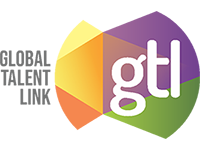Frequently, we focus on if children make their milestones as they develop. When they do not, doctors, teachers, other specialists as well as other parents help us get our children to hit these milestones. Instead of focusing on what is absent, I propose that we start with what is present and right with our children. When we focus on our children’s strengths, personal and academic performance improves. We all have noticed natural talents and strengths in our children, so let us now use these observations as a guide to further their growth and learning, this approach is referred to as strengths-based learning or strengths-based education. This does not mean we ignore weaknesses. It only means that weaknesses are an opportunity to grow and it is the focus on strengths that guide students’ work and contributions.
Strengths-based learning enhances kids’ schoolwork in numerous ways, such as increases engagement and confident participation in large classroom settings, further contributes with purpose in small groups, and personalizes their project work when working independently. Once strengths are identified, it is easier for the teachers, mentors, tutors, and parents in this child’s life to build on them.
To further embrace strengths-based learning with your child(ren), you can:
- Recognize the importance of strengths in the home environment (as a family and individually).
- Identify strengths of family members and promote the conversation with your child(ren) through observation and reflection. If you are unsure about helping your child identify their strengths, take some time, and observe what they do well or “right.”
- Praise effort. Professor Carol Dweck (1998) explains this specific aspect of praise as process praise (e.g., effort, strategies, focus). “I remember when tying your shoe was more difficult, look at you now.” Or “You are so patient and focused when you are building.”
Acknowledge weaknesses as part of the process, as we all have weaknesses. With that in mind, we can also use the power of yet (Dweck, 2014) as a great (and easy!) way to further learning and build confidence in our weak areas. An example of this is saying to your child, “You cannot do this yet, but you will with more practice.” Or “Yes, this is difficult right now, but you are still in the beginning phases of learning how to play the guitar.”

As parents and educators, we do have support in this area. There are lots of resources specifically designed to identify kids’ strengths. A resource I particularly like is Cifftonstrengths by Gallup (a research company) because they have middle and high school strength assessments. With guidance from educators, parents, and mentors, these types of assessments help older students take an active role in their learning and gain a greater understanding of themselves. If you are curious about this type of assessment or even interest around this concept, Gallup has a twelve episode webinar series as well as other resources on the topic. Global Talent Link peer mentorship can help find your child’s strengths.

For our children to succeed, educators, parents, and mentors need to provide them with the tools to be curious, be creative, and be confident in their skills, interests, and development. By applying a strengths-based approach with our children, not only does overall performance improve, but also gives them a competitive advantage in life.

Samantha Radovich is an education consultant from Colorado who has over fifteen years’ professional experience that spans five countries. She received her M.A. from Middlebury Institute of International Studies and her B.A. from the University of Colorado. Samantha is passionate about teacher education, second language acquisition, and bilingualism.
